When To Transition From Stage 1 to Stage 2 Formula
74 hours of research 5 minute read

Every new baby formula that is introduced in the marketplace has to undergo strict quality and safety checks before being allowed to be used by the babies. These formulas are also tested for their nutritional values and consistency to ensure that they meet the requirement of the age group of the baby they are designed for.
For example, a stage 1 formula cannot be identical to a stage 2 formula as they are formulated for two different infant ages with unique nutritional requirements. Hence, choosing a baby formula for your growing baby may seem like a complicated task. The most important factor is ensuring the product is appropriate for the infant's age and enriched with all the vitamins and minerals to ensure optimal growth and development.
This article focuses on baby formula stages, how they differ from one another, and the ways to easily transition from stage 1 to stage 2 baby formula.
What Are The Stages Of Baby Formula?
Baby formulas are available in different stages, based on the baby's age and developmental requirements as they grow older. Stages are based on the age at which they are designed to be eaten:
- Stage 1 Formula: baby formulas that are designed for babies aged between 0 to 6 months. These formulas are simple and offer more targeted nutritional value in comparison to typical formulas found in countries such as the the United States (where a "first stage style" formula has nutrient values that are intended for babies up through 12 months of age). The advantage of choosing a European Stage 1 formula vs. an American style formula is that you are not overdosing your baby on nutrients that they are not able to handle yet at a particular developmental stage. Stage 1 formulas are often called "infant first milk".
- Stage 2 Formula: baby formulas that are recommended for babies between 6 and either 10 or 12 months (depending on the manufacturer). Many stage 2 formulas begin to fortify their levels of iron and calcium to be more appropriate for this infant age bracket, coming closer in line with what US-based formula manufacturers would be giving in their "first style stage" formulas. Stage 2 formulas are sometimes slightly thicker in texture in comparison to stage 1 formulas. Nearly all HiPP, Kendamil, and Nannycare stage 2 formulas are for 6 - 12 months of age, whereas formula brands like Holle and Lebenswert typically make their stage 2 formula for the 6 - 10 month age bracket. Stage 2 formulas are often called "follow on formulas".
- Stage 3 Formula: baby formulas that are most often given to children who are 10 months and older, or 12+ months old (depending on the brand). The nutritional value of this formula is significantly fortified in comparison to earlier stages, with nearly all nutrients being at a higher rate in comparison to earlier stages. Many parents use stage 3 and stage 4 formulas interchangeably, and both are often called "toddler milk".
- Stage 4 Formula: toddler formulas that are typically given after a baby has reached its first year of life (12 months and older). Many stage 4 formulas can be given up through the 3rd year of a child's life (check the manufacturer directions). Parents who choose stage 4 formulas are often supplementing their toddler's diet, especially if the child is a particularly fussy eater.
Stage 1 Baby Formula
Stage 1 baby formulas are designed similar to breast milk so that a baby does not notice any evident change and accepts a formula milk. These stage 1 baby formulas often contain natural probiotic lactic acid cultures, which have been developed to closely mirror similar prebiotics and probiotics found naturally in breast milk. In addition, the main carbohydrate in s stage 1 formula is lactose, similar to breast milk. The presence of natural lactose means there is minimum to no starch in stage 1 formulas, ensuring higher safety for the baby. For some international context, the inclusion of lactose as the main carbohydrate is much more prevalent in European baby formula, whereas US formulas use either corn syrup or maltodextrin as a main carbohydrate source. Health professionals often recommend the most popular lactose-based infant stage 1 baby formulas: HiPP Dutch Stage 1, HiPP German Stage 1, Holle Goat Stage 1, and Holle Cow Stage 1.
Stage 2 Baby Formula
Stage 2 baby formulas are recommended for infants who are six months of age and older. This is when their body needs extra nutrients to ensure their steady growth and development, and stage 1 baby formulas may no longer be able to achieve that. A stage 2 formula is specifically created for infants above the age of 6 months and should not be given to those under this age because the kidneys and digestive tract are not developed enough to handle the richness of nutrients. Nutrient density is another common reason why many parents prefer to split up their baby's diet between stage 1 and stage 2 (of a European style stage), rather than a commonly found "first stage style" American formula which has very high nutrient densities which are not able to be properly processed by infants under the age of 6 months. Commonly recommended stage 2 baby formulas include HiPP Dutch Stage 2, HiPP German Stage 2, Holle Goat Stage 2, and Holle Cow Stage 2.
Visual Signs That A Baby is Ready To Move On To Stage 2 Formula
A concern that many parents share is how they will know that their baby is ready to move on to the next stage of formula. While age is one indicator, the other observable indicators include:
- Reduced tongue reflexes: When the baby reaches five months of age, their natural tongue reflexes start to get reduced, and they no longer push out the baby food that is being fed to them (instead the baby needs to "think" about pushing out a food).
- Asking for more food: The baby might still look hungry after being fed by the stage 1 formulas and may ask for more. This is because a baby is too big for the nutritional values that are being delivered by a stage 1 formula.
- Above average baby body size: If your baby is of a genetically larger build and your pediatrician suggests that it is in a higher growth percentile, it may be recommended to transition to a second stage baby formula sooner. It's important to note that this change should be led by your pediatrician, who will know in more detail whether your little one is prepared to handle a more nutrient-rich baby formula.
Difference Between Stage 1 and Stage 2 Formulas
There are a number of differences between the stage 1 and stage 2 formulas. These may be differentiated based on recommended age, consistency, types of proteins, and ingredients.
Baby Age
While stage 1 formulas are recommended for infants between 0 to 6 months of life, stage 2 formulas are recommended for infants above six months. In addition, infants who are currently on a liquid diet only are given stage 1 formula, while those who have reached a point where they have started consuming solid foods will typically already move on to a stage 2 formula (since the baby is older).
Protein Amount
Even though the nutritional basis of stage 1 and stage 2 formula milk is more or less similar to one another, they are different based on the proteins found in them. The proteins found in stage 1 infant milk are mostly Whey Proteins, while that found in stage 2 formulas are mostly Casein.
Formula Consistency
The difference based on consistency is that stage 1 formulas are often more watery, as babies under six months are mainly used to liquid diets. On the other hand, the consistency of stage 2 formulas typically forms a slightly thicker curd, as the babies can consume a heavier diet at this point. The thicker consistency also keeps the baby fuller for longer.
Ingredients
For most baby formula manufacturers, stage 1 and stage 2 formulas are typically nearly identical in terms of ingredients. While those ingredients are similar, the nutritional density of a 2nd stage formula will generally be a bit higher since a baby is more mature and requires more nutrients to maintain healthy growth and development. Some formulas begin to fortify their ingredients with additional calcium and iron by the time that a formula is in its second stage. First stage baby formulas are sometimes a bit simpler in terms of ingredients, which is aimed at making the formula as easy to digest as possible. Both first and second stage European formulas include a natural source of DHA and Omega-3, such as from fish oil extracts or from sea algae (in vegetarian baby formulas).
How Do You Transition From Stage 1 To Stage 2 Baby Formula?
The transition between stage 1 and stage 2 baby formula should be gradual and should only be done once the parent can see the signs that the baby is ready for a more nutrient rich formula. The transformation process should be slow and steady to allow the baby a chance to get used to the new texture and consistency before the formulas are completely switched. The recommended period of transition is often over the course of about a week. During the week, the baby's digestive system also gets a chance to adjust to the new formula.
The best way to do this is by mixing the new formula with the older formula. In the first two days, the parents can start by adding 25% of the stage 2 baby formula while keeping 75% of the original stage 1 formula. On the 3rd and 4th days, the percentage of the stage 2 formula can be increased to 50% while keeping 50% of the stage 1 formula. On the 5th and 6th day, the percentage of stage 2 formula can be increased to 75% while keeping 25% of the stage 1 formula in the baby food. By this time, the baby's taste buds and digestive tract have adjusted to the new formula. Finally, on the seventh day, the parents can make the complete switch by feeding the baby only the stage 2 formula.
Signs To Look Out For
Although transitioning from stage 1 to stage 2 formula can often be completed in as fast as a week's time, some certain signs and symptoms should be looked out for during the transition period. These include:
- Skin Rashes or Eczema
- Signs of Allergy like shortness of breath or hives
- Vomiting
- Blood in the feces
- Constipation
- Gassiness
- Severe Diarrhea
These are the signs that the baby may not yet be tolerating the new baby formula. At this point, parents can look at alternate options for stage 2 baby formula, such as ones that are either based on goat milk or lactose-free hypoallergenic formulas.
Top 4 Easiest Formulas To Transition To
✓ Age: 6-12 months
✓ Contains Probiotics & Prebiotics
✓ No sugar, no corn syrup, no soy
✓ No starch
✓ HiPP's most popular formula
Check PriceHipp Dutch stage 2 is amongst the easiest and safest formulas to transition to as it contains natural probiotic cultures of lactic acid extracted from human breast milk.
✓ Age: 6-12 months
✓ No palm oil
✓ Contains natural whey, DHA, & ALA
✓ Demeter certified (Organic++)
Check PriceHolle Goat Dutch Stage 2 is a goat milk-based formula milk that is recommended to be used by babies above the age of 6 months. It is particularly beneficial for babies with a cow milk allergy risk.
✓ Contains Probiotics & Prebiotics
✓ No sugar or corn syrup
✓ No soy
✓ HiPP's original formula
Check PriceThe Hipp German Combiotic formula uses chemical-free agricultural practices and is free from all artificial sweeteners and GMOs, making it a highly safe formula milk to transition to.
4. Holle Cow
✓ Age: 6-12 months
✓ Clean formula ingredients
✓ Demeter biodynamic certified
✓ Contains natural whey, DHA, & ALA
✓ Holle's most popular cow formula
Check PriceHolle Cow stage 2 formula milk is a Germany-based gluten-free and Demeter-certified formula milk. It is free from artificial sugars, preservatives, and gluten.
FAQs About Transitioning To Stage 2 Baby Formulas
Can I Give My 5-Month-Old Stage 2 Baby Formula?
While five months of age can be a confusing time for the parents as the infant is now ready to try out new flavors and textures, their digestive system may not be developed enough to move onto the Stage 2 formula. Unless a pediatrician advises differently, this is why babies five months of age should be fed with stage 1 formulas and may be transitioned to stage 2 when they turn six months.
What Age Is Stage 1 Baby Formula Given To?
Stage 1 baby formulas are given to infants between the age of 0 months and 6 months.
What Age Is Stage 2 Baby Formula Given To?
Stage 2 baby formulas are given to infants between the ages of 6 months to one year. Some European baby formula brands are only for infants between ages 6 to 10 months, whereas others are for infants between ages 6 to 12 months.
Transitioning Formulas
Before considering a new baby formula, parents are advised to consult a pediatrician to ensure the new formula will suit their child. Parents are also recommended to double-check the ingredients mentioned at the back of the baby formula to check if they contain any ingredient that the baby might be allergic to. Once the baby has been transitioned from stage 1 to stage 2, parents should closely monitor their baby's progress and if they are adjusting well to the new formula.
For those wondering how to transition from formula to milk, understanding the process is essential. Parents can seek guidance from their pediatrician or reliable resources online to learn about the steps involved in this transition. Additionally, there is a formula to milk transition chart available that outlines gradual methods for introducing cow's milk to your baby's diet while reducing their intake of formula. By following these guidelines and observing your baby's response, you can ensure a smooth and comfortable shift from formula to milk.
Most Popular Stage 2 Formulas For Easy Transition
Organic Life Start is committed to providing accurate, reliable, and trustworthy information to parents and caregivers. We carefully choose credible sources and follow a meticulous fact-checking process to uphold the highest standards in infant nutrition and parenting advice. To learn more about our dedication to accuracy, please explore our editorial guidelines.
Link To Sources
- https://www.firststepsnutrition.org/parents-carers#:~:text=babies%20and%20young%20children%20can,throughout%20the%20first%20year
- https://www.kidshealth.org.nz/formula-feeding/choosing-infant-formula-for-your-baby#:~:text=Follow,cow%E2%80%99s%20milk
- https://www.nhs.uk/baby/breastfeeding-and-bottle-feeding/bottle-feeding/types-of-formula/


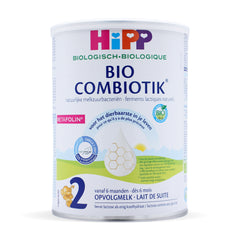
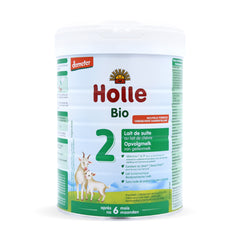
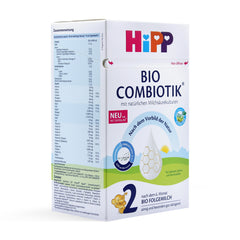
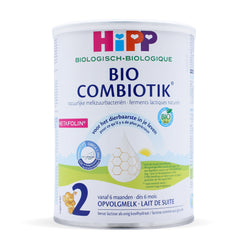


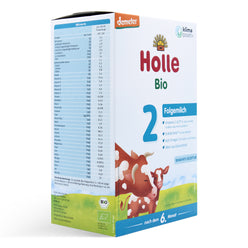
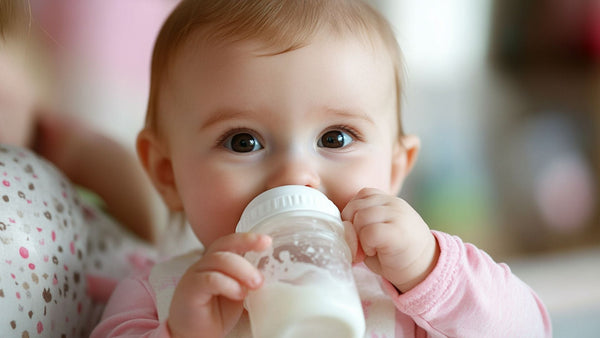





Leon T -
I would like to ask if it is advisable to try the new formula when the baby is already 5 months old. Is it considered safe to introduce the new formula at 5 months, or is it better to wait. Some parents say earlier introduction helps with adjustment, so I want to clarify this. Others recommend waiting until the baby reaches exactly 6 months of age. I am concerned about the baby’s digestion and possible reactions. I want to make sure the timing supports healthy growth and comfort. Could you please advise which option is generally better. Is there a clear advantage to waiting until 6 months instead of starting at 5 months. I would appreciate guidance based on typical recommendations. Your advice will help us decide the best time to try the new formula.
Nickolas G -
January 05, 2026
I’ve come across a lot of mixed opinions when it comes to knowing the right time to transition from Stage 1 to Stage 2 formula, and it can honestly feel a bit overwhelming as a parent. Some people say to follow age recommendations closely, while others emphasize watching your baby’s cues more than anything else. I’ve heard parents mention signs like increased hunger, changes in feeding frequency, or seeming less satisfied after bottles, but experiences seem to vary so much. It makes me wonder how others decided the timing was right for their baby. Did you notice clear differences after switching, or was it more of a gradual adjustment? I’d really appreciate hearing what approaches worked best for other parents and what signs ended up being the most reliable in your experience.
Ashlee Harlow -
December 26, 2025
Transitioning from Stage 1 to Stage 2 formula was a significant milestone for both my son Andy and me. I ensured to avoid haste and instead focused on his signals, appetite, and the level of his contentment following each feeding. My research indicated that preparedness is equally important as age in relation to adaptation. HiPP Dutch’s consistency made our decision to move easier and more doable. Andy did a great job of adapting; he never showed any signs of gas or increased anger. I loved seeing how content he stayed, even as his nutritional needs started to shift. It reassured me that we were making the right choice at the right time. Moments like this make me realize how quickly he’s growing. Choosing HiPP Dutch has given me confidence at every stage of his feeding journey.